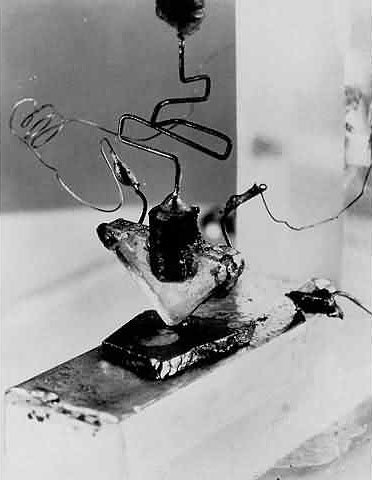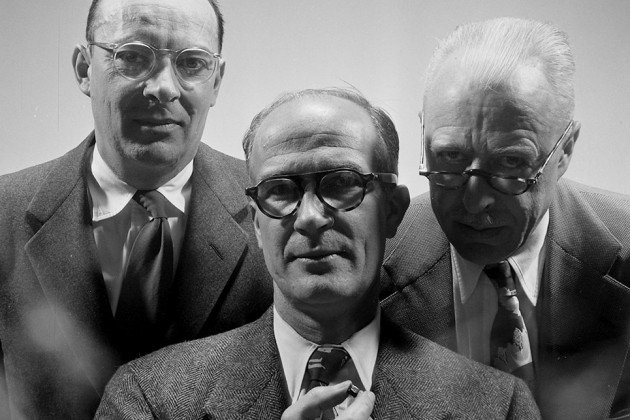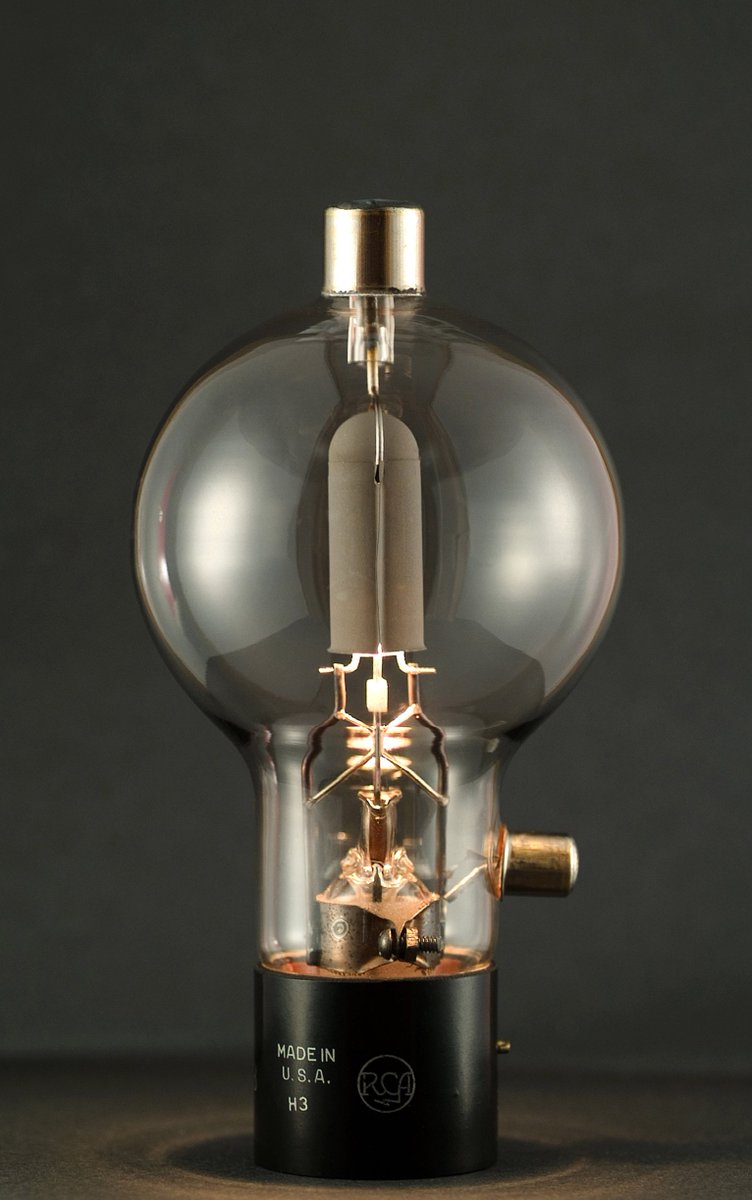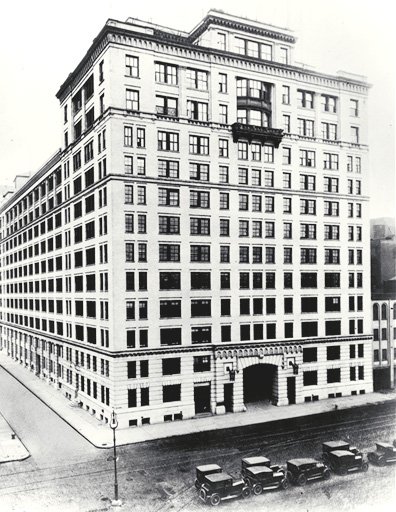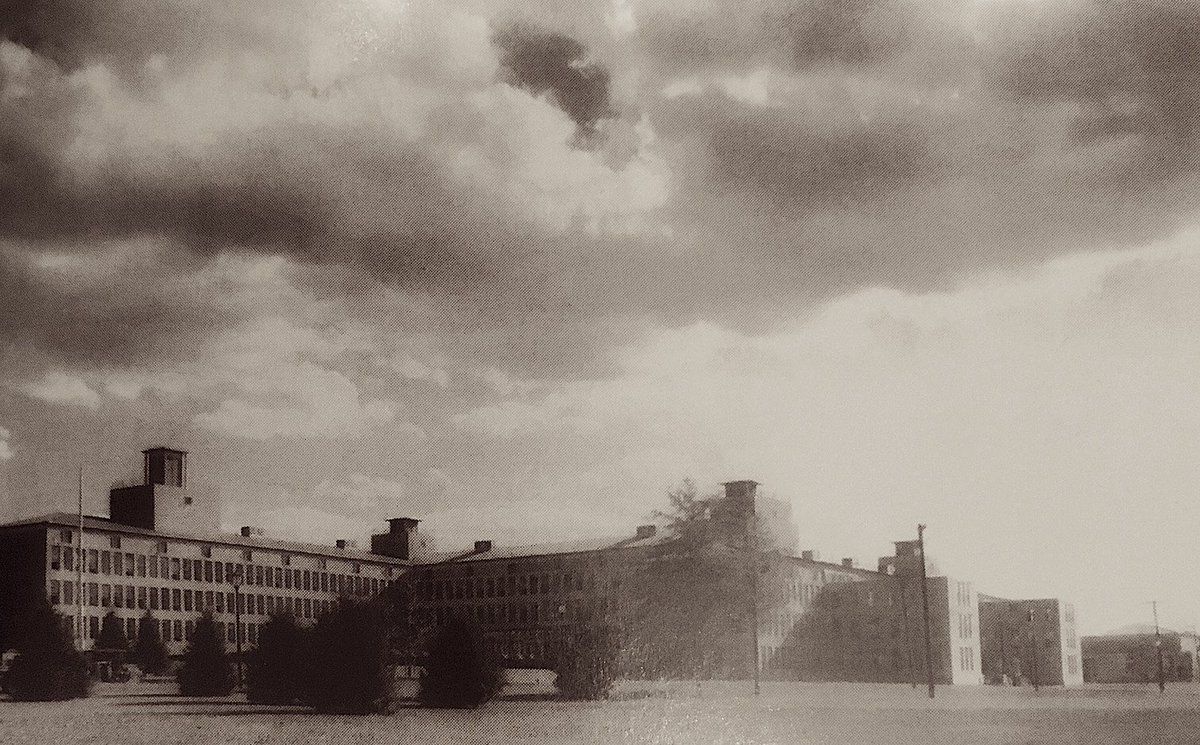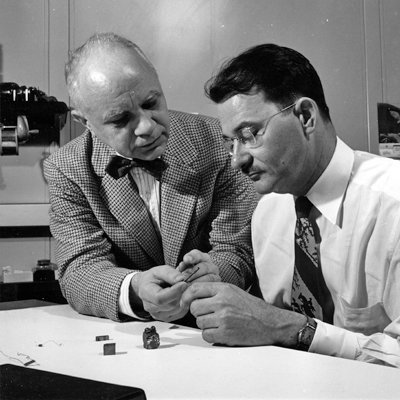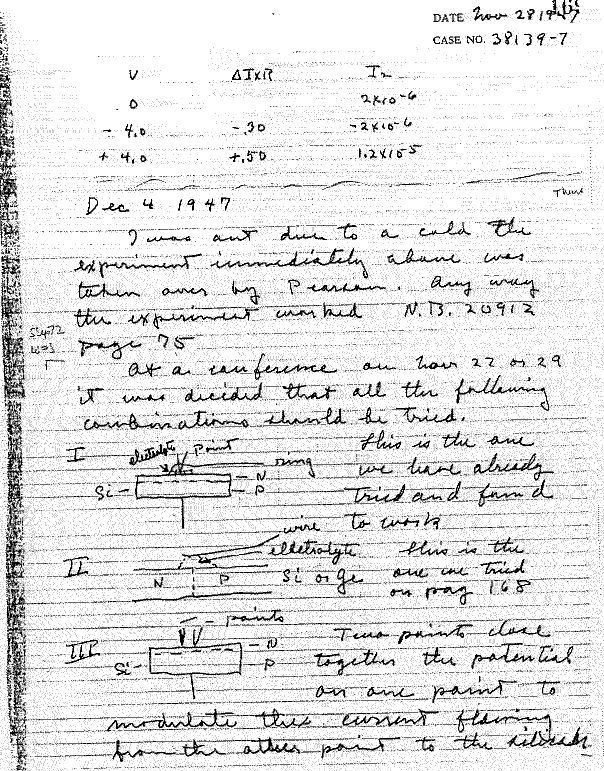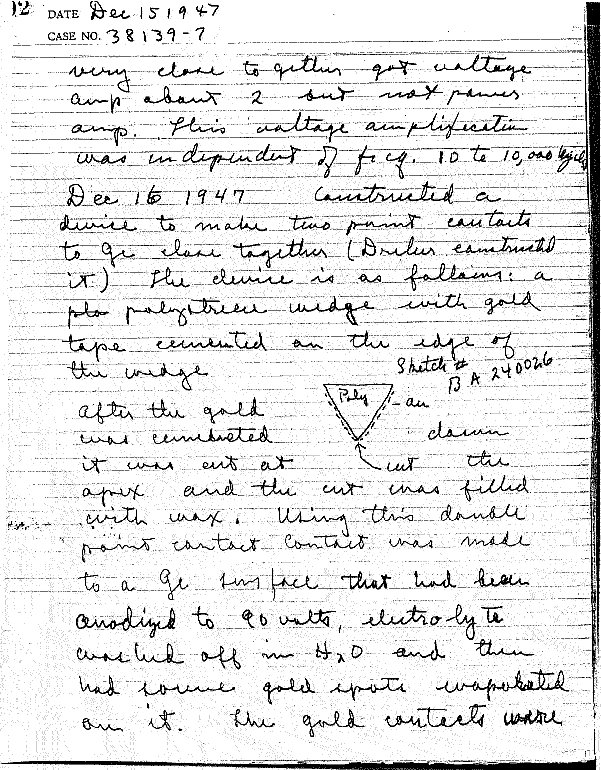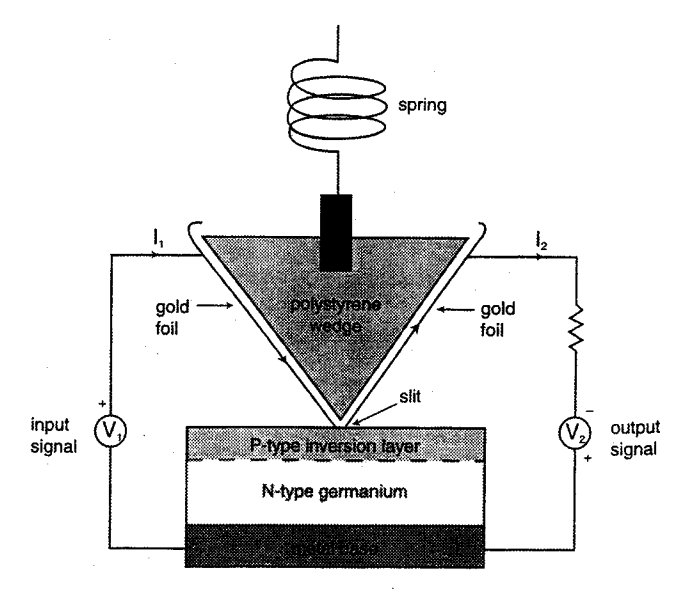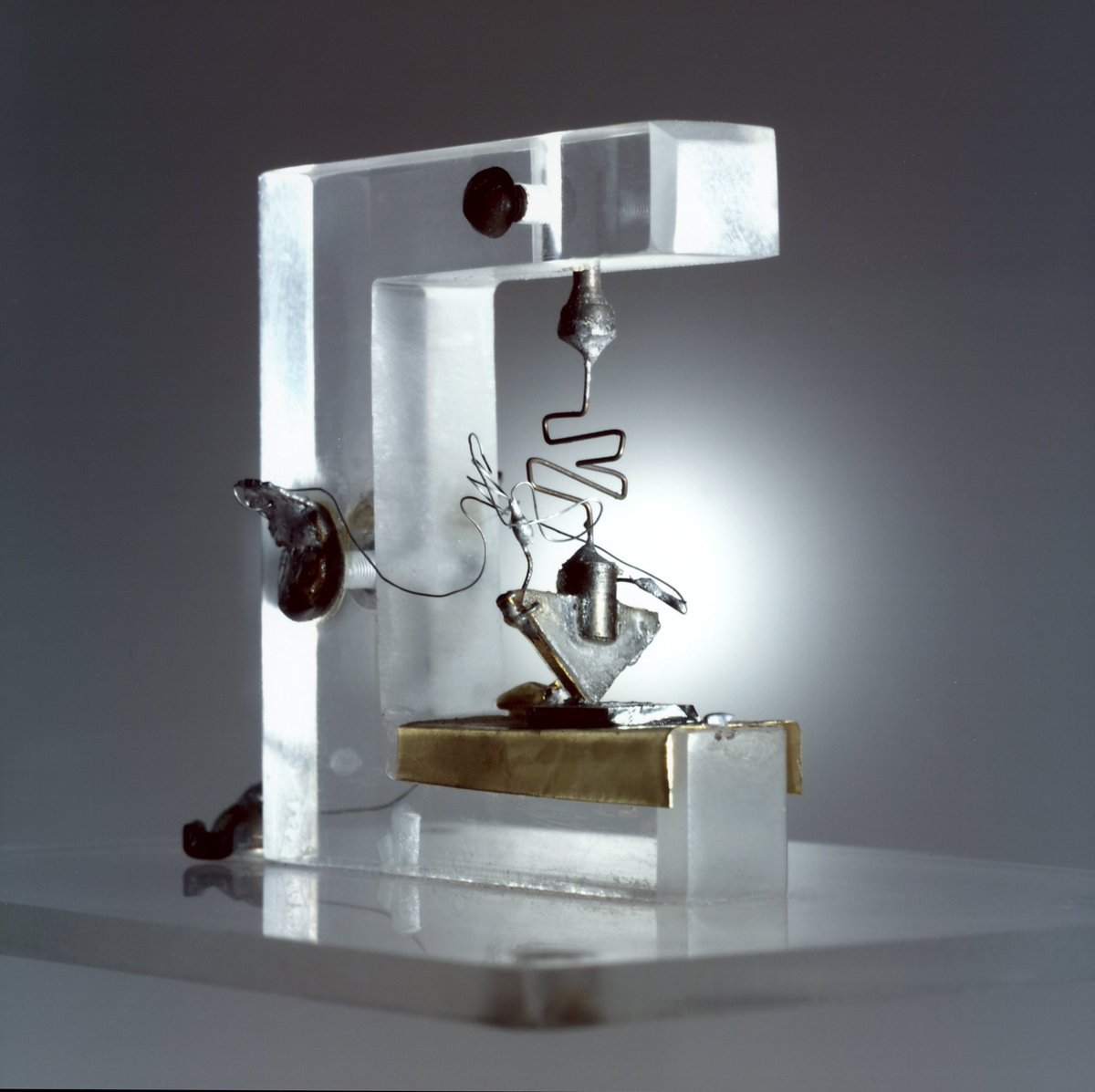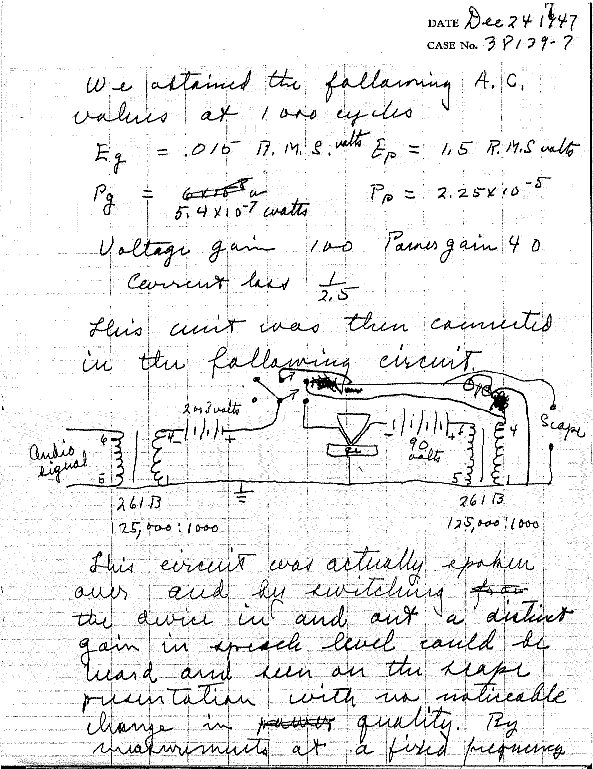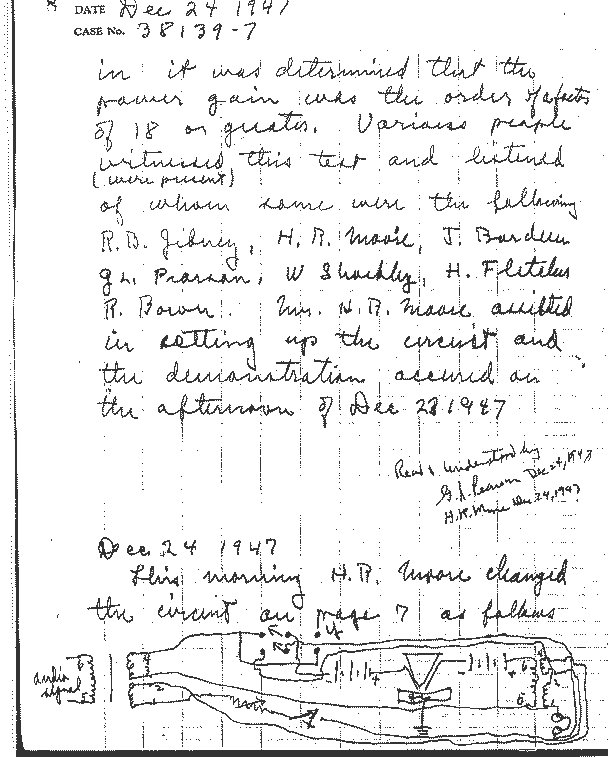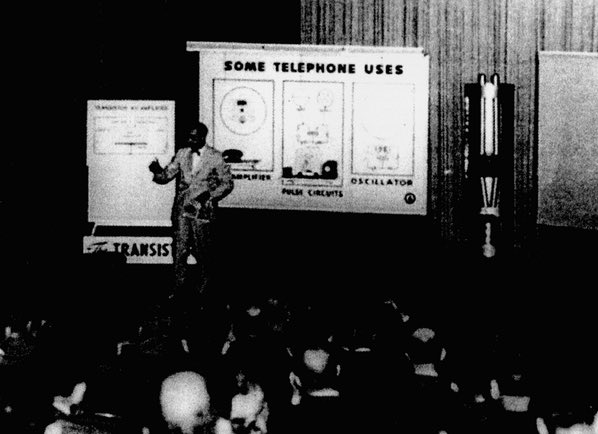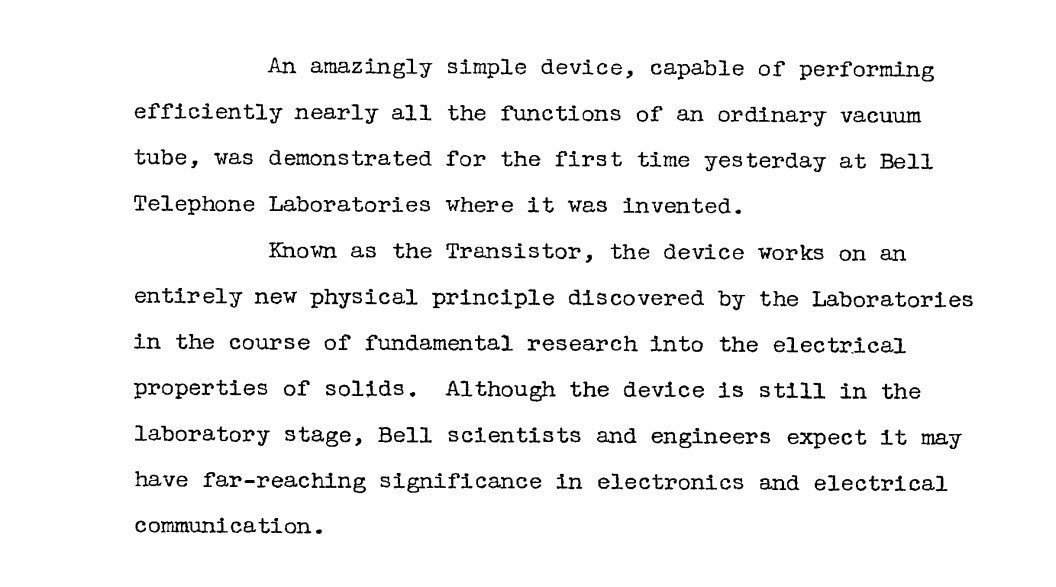70 years ago today, at the end of a miracle month of breakthroughs, John Bardeen (L) & Walter Brattain (R) demonstrated the first transistor to colleagues at @belllabs. It's been described as one of the most important inventions of the 20th century (shown here with Schockley):
They had spent the past month working on a point-contact transistor, a semiconductor device which can amplify electrical signals. It was developed to replace vacuum valves & tubes which were fragile, got hot and consumed lots of power.
( : Wikicommons)
: Wikicommons)
(
 : Wikicommons)
: Wikicommons)
Bell Labs was the research arm of telephone company AT&T. Since the 1910s they'd used vacuum tubes to carry and amplify telephone signals over long distances, but they were handmade and unreliable.
For a telecom company like @ATT, this was a problem. Mechanical tubes and relays were difficult to make and not very durable. In a lecture @BellLabs' head of research Mervin Kelly suggested the idea of using solid state amplifiers with no moving parts.
In late 1939 theorist Bill Shockley began designing an amplifier device incorporating solid state semiconductors into vacuum tube architecture. Walter Brattain was the brilliant hands-on physicist who built them, but they didn't work. Then WW2 happened.
Wartime spurred on huge research in semiconductor research. Bell Labs set up a Solid State Physics group and during the 40s slowly moved from its building in lower Manhattan (which had a train line running through) to a 200 acre, purpose-built lab in New Jersey
The new Solid State Physics group formed in 1945 and was headed by Shockley. Brattain soon joined. By now technology had progressed, and, off the back of WW2 radar research, the lab could make v v v pure crystals of silicon & germanium.
This followed earlier work by another Bell Labs' scientist, Russell Ohl, on the p-n junction diode http://www.circuitstoday.com/the-story-of-pn-junction-diode
Brattain was interested in semiconductor surface states, what happened when slugs of very pure Si or Ge were coupled to circuits or exposed to heat. Theorist John Bardeen, a bright PhD from Princeton, joined the group in October fresh from the Naval Ordnance Lab in Maryland
Bardeen and Brattain were ideally-matched scientists, theorist and experimentalist, quiet and loud, hands and brain, working very closely together.
Around this time Shockley proposed an idea of a "field effect" amplifier, based on applying a current to the surface of a semiconductor wafer. The idea was this would change its conductivity and amplify the output signal, only it didn't quite work and for a year they struggled 

In early 1946 Bardeen (the quiet one) postulated this was because when a charge was applied to a semiconductor the surface electrons were trapped in "surface states" and couldn't move. This formed a barrier between the outside and the bulk material.
This blocked the field within the semiconductor. So, if you were aiming to build a field-effect amplifier, you'd first have to break through this barrier at the surface.
Bardeen suggested experiments and interpreted the results, Brattain built the devices and ran the tests. They didn't have very much success and it's said that Shockley, came close to cancelling the project.
Brattain met with a physical chemist, Robert Gibney, to explore if the field-blocking effect by the surface states could be cancelled by immersing the silicon in an electrolyte.
Brattain tried by literally dunking the entire apparatus in water. It worked! (a little bit)
After this, Bardeen thought of a new way to make an amplifier, using a point-contact electrode pressed into the surface of a specially-prepared silicon layer surrounded by distilled water. It was tested in November 47 and marked the beginning of a "miracle month" of results
Walter Brattain's lab notebook from Dec 4th 1947 shows the amplifier set-up with point contacts surrounded by an electrolyte layer:
( : @ATT Archives)
: @ATT Archives)
(
 : @ATT Archives)
: @ATT Archives)
Now Brattain and Bardeen were refining the design: introducing a thin inversion layer to help the current flow and modulation, using gold on n-type germanium as the base, and eventually getting rid of the liquid layer since it was slowing down the device.
Bardeen suggested the two contact electrodes, the emitter and the collector, had to be very close together, no more than 0.05 mm apart
On December 16 Brattain wrapped a ribbon of gold foil around the edge of a polystyrene arrowhead, sliced along the edge, forming two separate, closely-spaced contacts. He then pressed this wedge and the two contacts into the germanium, and held it in place with a spring.
Each end of the arrowhead, the emitter & collector, was connected to separate batteries to form a circuit. After some wiggling they measured the output & found a current amplification over a wide range of frequencies - it worked!
( : from Crystal Fire by Michael Riordan, 1998)
: from Crystal Fire by Michael Riordan, 1998)
(
 : from Crystal Fire by Michael Riordan, 1998)
: from Crystal Fire by Michael Riordan, 1998)
Shockley, Bardeen & Brattain didn't quite fully understand what was happening in the device, all that mattered was amplification. For the rest of the week they refined the device before an official demonstration at a group meeting at Bell Labs 70 years ago today
( : @BellLabs)
: @BellLabs)
(
 : @BellLabs)
: @BellLabs)
Brattain's lab books from Dec 24 after the demo with a diagram of the amplifier and describing the previous days events. It was verified and signed by their colleagues Gerard Pearson (of solar cell fame) and Hilbert Moore.
Shockley was pretty annoyed he wasn't directly involved, but he deemed the results "a magnificent Christmas present". Shortly afterwards he developed his own junction transistor design which turns out, was better suited for mass production.
Today, the latest Intel chips can cram over 100 million transistors per square millimetre. Whatever you're reading these tweets on probably contains a couple of billion of them. They are TINY.
If you want to read more I recommend Michael Riordan & Lillian Hoddeston's Crystal Fire https://www.goodreads.com/book/show/1665420.Crystal_Fire and The Idea Factory by @jongertner https://www.penguin.co.uk/books/193465/the-idea-factory/
Also, @ATT Tech Channel has a frickin' awesome collection of archive films on the early days of vacuum tubes, and how transistors came to be  https://www.youtube.com/user/ATTTechChannel/search?query=transistor
https://www.youtube.com/user/ATTTechChannel/search?query=transistor
 https://www.youtube.com/user/ATTTechChannel/search?query=transistor
https://www.youtube.com/user/ATTTechChannel/search?query=transistor
Y'know what else uses transistors?
70 years ago today, at a press conference in New York, Bardeen & Brattain gave the 1st public demonstration of the transistor
1948 @BellLabs press release announcing the transistor, one of the 20th century’s most important inventions, to the world: "It may have far-reaching significance in electronics & electrical communication." https://beatriceco.com/bti/porticus/bell/pdf/bell-labs%20transistor%20announcement.pdf

 Read on Twitter
Read on Twitter